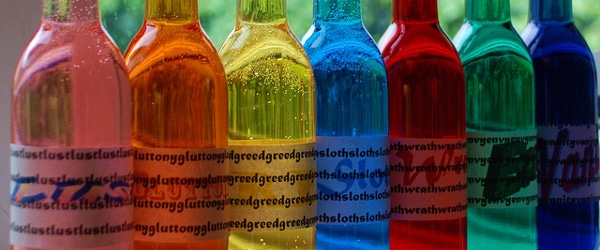Thanks to the power of digital imaging software, faking data is a lot easier than doing real science. Clearly the honest majority of us would never deliberately distort the scientific record, but is it possible to stumble into trouble through sheer ignorance?
Quite possibly. The line between innocent enhancement and deliberate fraud can be blurry and there is a good chance that you and the editors of your-favourite-high-impact journal have different ideas on where that blurry line lies. For instance, it is estimated that up to 25% of accepted journal articles show evidence of image manipulation that the editors of the journal considered inappropriate1-3.
Journal editors are understandably worried about the increasing rates of image fraud and most have adopted much more explicit rules about the kinds of manipulations that they allow. Some have also started actively screening for images with signs of doctoring. If your image shows any signs of inappropriate processing, you will have to resubmit a new version alongside the original data files.
So now would be a good time to get clear about what kind of processing is usually acceptable. Here is a rough guide:
1) Always, always, always, retain the original files. This is the most important piece of advice on data collection you will ever receive. If you lose your original file, or overwrite it with an adjusted version, you have no evidence that it wasn’t processed fraudulently. It’s like you never bothered to do the experiment at all.
2) Cleaning up background is silly and misleading. The re-touching and ‘cloning’ tools of imaging software were designed to beautify art and design, not to represent data accurately. Using these tools to artificially reduce background misrepresents the actual conditions of your experiment. Background is an expected feature of scientific images and if yours is so bad that the data can’t be interpreted, you probably need to repeat the experiment anyway.
3) Crop and splice to simplify, not to obscure. Inevitably your raw images will need to be cropped to fit neatly into a figure. This should not be taken as a license to obscure inconvenient truths. Lanes from different gels that have been spliced together should always be indicated by a border or gap.
4) Adjust the contrast across the whole image. Brightness and contrast changes need to be applied across the whole image, not selectively to specific areas. If you need to show two different features in the same image at different contrast settings, it can be done with an inset or some other clear demarcation. Non-linear contrast changes (like gamma adjustments) need to be listed in the figure legend.
5) If you oversaturate, you might as well just squint. Pixel oversaturation is common in published images. Sometimes it is done deliberately, to try to manipulate the appearance of the data, but it is more frequently done in the mistaken pursuit of a ‘contrasty’ image. If more than a small proportion of your image contains pixels at the highest possible value, then you are losing data and might well be misrepresenting it. It is particularly crucial to be aware of saturation levels during acquisition of the image (e.g. exposure times, gain settings), since data lost at this stage is lost forever.
6) Use your judgment to keep a clean conscience. The final advice is to use your best judgment to recognize any situation where image processing could mislead. A useful question to ask yourself is: Would I be embarrassed to show my least friendly competitor exactly how I processed this image?
Unfortunately, many young scientists are under enough pressure that they have probably ignored some of these guidelines on a few occasions. How common do you think image fudging is? Do you ever come across dubious image manipulation practices?
References:
1Rossner, M. (2006) How to Guard against Image Fraud, The Scientist, Vol 20 (3), p 24
2Gilbert, N. (2009) Journals Crack Down on Image Manipulation, Nature News, doi:10.1038/news.2009.991
3Abraham, E. et al. (2008) The ATS Journals’ Policy on Image Manipulation, Proceedings of the American Thoracic Society, Vol 5, p 869, doi:10.1513/pats.200809-106ED






